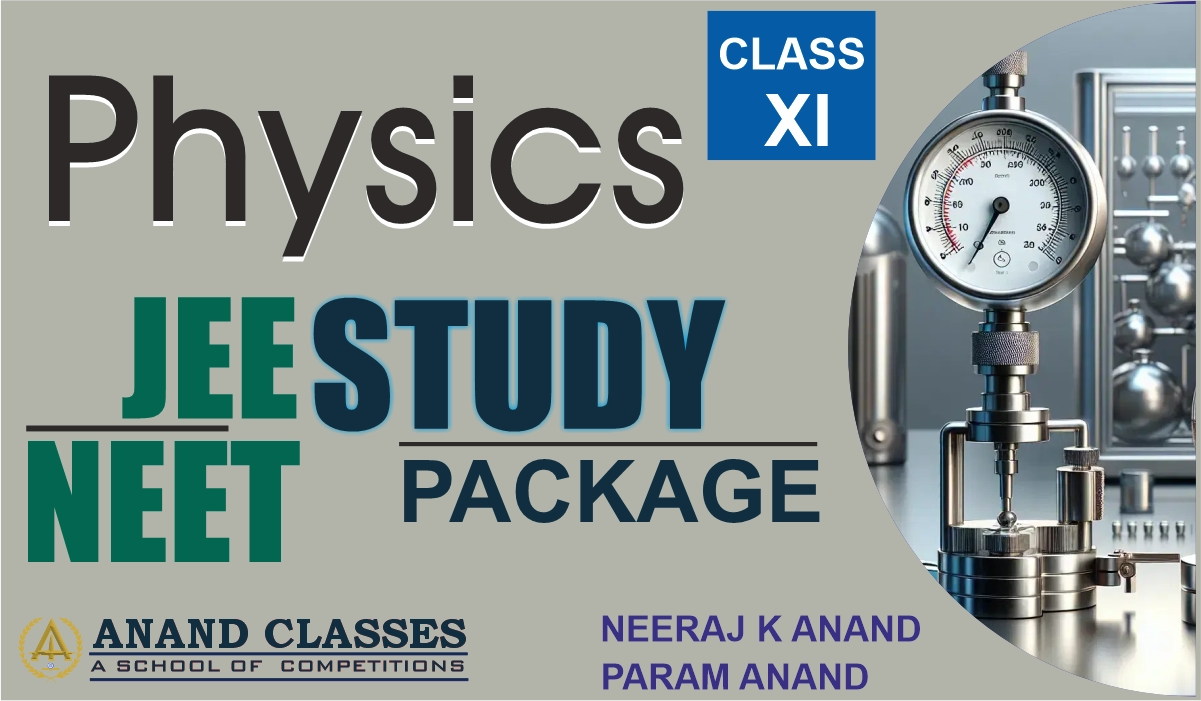ANAND CLASSES study material and notes which explore about Average Speed, Uniform Speed, Non-uniform Speed, and Instantaneous Speed with detailed explanations, formulas, solved examples, MCQs, FAQs, and exam-oriented conceptual questions. Perfect for JEE, NEET, and CBSE Class 11 students. Get expert coaching from Anand Classes and access high-quality study materials.
Understanding Speed
Speed is a measure of how fast an object moves. It tells us how much distance an object covers in a given time.
Formula:
$$\text{Speed} = \frac{\text{Distance Travelled}}{\text{Time Taken}}$$
SI Unit of Speed:
- The standard unit of speed in the International System of Units (SI) is meters per second (m/s).
- Other commonly used units include kilometers per hour (km/h) and miles per hour (mph).
Example:
A car covers 150 km in 3 hours. Find its speed. $$\text{Speed} = \frac{150 \text{ km}}{3 \text{ hours}} = 50 \text{ km/h}$$
Thus, the car moves at an average speed of 50 km per hour.
Average Speed
Since maintaining a constant speed is difficult in real-world situations, we use average speed to determine the overall speed of an object.
Definition:
The average speed of a body is the total distance travelled divided by the total time taken to cover this distance.
Formula for Average Speed:
$$v_{\text{avg}} = \frac{\text{Total Distance Travelled}}{\text{Total Time Taken}}$$
Example 1:
A person walks 3 km in 1 hour, then cycles 7 km in 30 minutes. What is their average speed?
$$\text{Total Distance} = 3 + 7 = 10 \text{ km} $$
$$\text{Total Time} = 1 + 0.5 = 1.5 \text{ hours} $$
$$v_{\text{avg}} = \frac{10}{1.5} = 6.67 \text{ km/h}$$
Example 2:
A train covers 120 km in 2 hours and then 180 km in 3 hours. What is its average speed?
$$\text{Total Distance} = 120 + 180 = 300 \text{ km} $$
$$\text{Total Time} = 2 + 3 = 5 \text{ hours} $$
$$v_{\text{avg}} = \frac{300}{5} = 60 \text{ km/h}$$
🚀 Key Observation: Average speed is not the simple average of speeds in different time intervals. It depends on total distance and total time.
Uniform (Constant) Speed
If an object moves equal distances in equal time intervals, no matter how small these intervals are, it is said to be moving with uniform speed.
Definition:
A body has a uniform speed if it travels equal distances in equal intervals of time, no matter how small these time intervals may be.
Examples:
- A train moving at 80 km/h on a straight track without stopping.
- The movement of the Earth around the Sun is nearly uniform.
🔹 Real-Life Example: If a car moves 60 km in 1 hour, then in 30 minutes, it will move 30 km, and in 10 minutes, it will move 10 km.
Non-Uniform (Variable) Speed
If an object covers unequal distances in equal time intervals, its speed is said to be non-uniform or variable.
Definition:
A body has a uniform speed if it travels equal distances in unequal intervals of time, no matter how small these time intervals may be.
Example:
A motorcyclist covers different distances in each second:
- 1st second → 5 meters
- 2nd second → 8 meters
- 3rd second → 10 meters
- 4th second → 4 meters
Since the distances covered in each time interval are different, the speed is variable.
🔹 Real-Life Example: A bus moving in city traffic, slowing down and speeding up frequently.
Instantaneous Speed
The instantaneous speed of an object is its speed at a specific instant.
Definition:
The instantaneous speed is average speed for infinitesimally small time interval (i.e., Δt → 0) i.e. It is the speed when the time interval approaches zero. Thus
$$v_{\text{i}} =\lim_{\Delta t \to 0} \frac{ds}{dt}$$
Example:
- The reading on a car’s speedometer shows instantaneous speed.
- A sprinter running a 100-meter race has different speeds at different points.
🛠 How to Measure?
- A speedometer in vehicles measures instantaneous speed.
- A police radar gun calculates instantaneous speed of moving cars.
Exam-Oriented Numerical Problems with Solutions
Problem 1: Find the Average Speed
A car moves 200 km in 4 hours and then 150 km in 3 hours. What is the average speed?
Solution: $$\text{Total Distance} = 200 + 150 = 350 \text{ km} $$
$$\text{Total Time} = 4 + 3 = 7 \text{ hours} $$
$$v_{\text{avg}} = \frac{350}{7} = 50 \text{ km/h}$$
✔ Answer: 50 km/h
Problem 2: Instantaneous Speed Calculation
A particle moves with the equation: $$s = 5t^2 + 2t + 3$$
Find its instantaneous speed at t = 2s.
Solution:
Instantaneous speed is given by: $$v = \frac{ds}{dt}$$
Differentiating s :
$$v = \frac{d}{dt} (5t^2 + 2t + 3) = 10t + 2$$
At t = 2s :
$$v = 10(2) + 2 = 20 + 2 = 22 \text{ m/s}$$
✔ Answer: 22 m/s
Real-Life Applications of Speed
🔹 Road Safety: Understanding speed is crucial for avoiding accidents.
🔹 Sports Performance: Athletes use speed calculations to improve their running efficiency.
🔹 Space Exploration: Rockets need to maintain the correct orbital speed to stay in orbit.
Do You Know? (Fun Facts)
✅ Light travels at 299,792 km/s, the fastest speed known!
✅ Sound travels at 343 m/s in air, but faster in solids.
✅ Cheetahs can reach speeds of 112 km/h but only for short bursts.
Quick Revision Points
✔ Speed Formula: $$v = \frac{s}{t}$$
✔ SI Unit: m/s
✔ Uniform Speed: Equal distances in equal time
✔ Non-Uniform Speed: Unequal distances in equal time
✔ Instantaneous Speed: Speed at a given moment
Best Coaching Center for IIT-JEE, NEET, and Foundations
📚 ANAND CLASSES – The best coaching institute for JEE, NEET, and CBSE Board Class 11 exams.
🛒 Buy complete study material at Anand Classes Publishers
📌 Proprietor: NIRMAL ANAND Educations
📖 Written by: Neeraj Anand
📍 Published by: Anand Technical Publishers
📞 Contact: +91-9463138669
✉ Email: anandclasses1996@gmail.com


